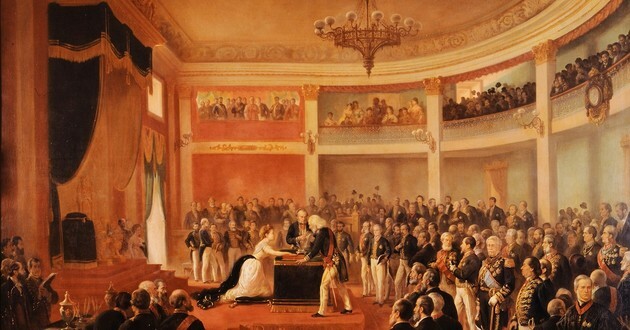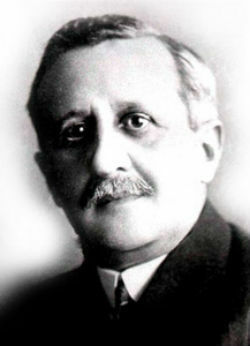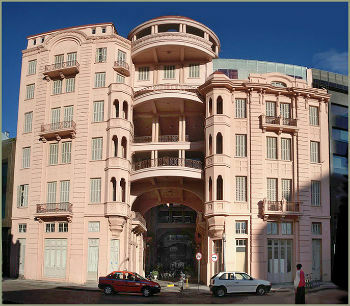THE Princess Isabel, Isabel de Bragança or Isabel do Brasil, was one of the most important female figures in the country's history.
She was the first woman to administer Brazil, being Regent of the Empire and the last Imperial Princess of the country.
She assumed the throne three times, on account of travels made by Dom Pedro II. In his last regency, he signed the Lei Áurea that extinguished slavery in Brazil.
Biography
Isabel Cristina Leopoldina Augusta Micaela Gabriela Rafaela Gonzaga de Bourbon and Bragança, was born in the São Cristóvão Palace in Rio de Janeiro, on July 29, 1846.
Isabel was the first daughter of the Emperor of Brazil, Dom Pedro II, and of the Empress Dona Teresa Cristina de Bourbon-Duas Sicilies. The couple's second daughter, Princess Leopoldina (1847-1871) was her lifelong companion. She even had two brothers who died in infancy.

As is to be expected, she had a thorough education at the Court, guided by several masters, which expanded her general knowledge and studies of foreign languages.
In 1860, at just 14 years old as stipulated in the country's Constitution, she took the oath as heir to the throne which stated:
“maintain the Catholic religion, observe the country's political constitution and be obedient to the Laws and the Emperor”.
Wedding
In 1864, she married the French prince Dom Luís Filipe Maria Fernando Gastão de Orléans who would become better known as Gastão de Orléans, the Count d'Eu. In turn, her sister, Princess Leopoldina, married his cousin, Luís Augusto Maria Eudes de Saxe-Coburgo-Gota, Duke of Saxe.
The marriage generated three children: the princes D. Pedro de Alcântara, D. Luís Maria Filipe and D. Antônio Gastão Francisco.
Princess Isabel traveled with her husband through the European courts and was received in Portugal, Spain, France and the United Kingdom. Likewise, she visited several Brazilian capitals and cities.
In Brazil, she actively participated in the abolitionist cause, freed the slaves in her service on her wedding day, and was always inclined to questions of education..
Exile
With the republican coup and the institution of the republic, the Imperial Family was expelled from the country on November 18, 1888. Dona Isabel goes to live with her family in France, in the castle of Eu.
She died in France, on November 14, 1921, without ever having returned to Brazil.
Abolition of Slavery

Princess Isabel was actively involved in the process of abolition of slavery in Brazil. She allied with popular abolitionist movements, received figures from the movement such as André Rebouças and always had a bunch of camellias on her desk, a symbol of abolitionism.
She signed the laws that conferred the release of slaves as the law of the free womb (No. 2040), signed by the Princess on September 28, 1871, where she instituted freedom for the children of slaves who were born from that date.
THE Golden Law (No. 3.353), signed on May 13, 1888, extinguished slave labor in the country that lasted 300 years. According to the document:
“The Imperial Princess Regent, in the Name of His Majesty, the Emperor, Dom Pedro II, makes known to all the subjects of the Empire that the General Assembly has decreed and She has sanctioned the following Law:
Art. 1st - Slavery in Brazil is declared extinct since the date of this Law.
Art. 2nd - The contrary provisions are revoked.”
With this law she became known as the “Slave Redeemer”, but gained the enmity of the elite in general. Among other things, Princess Isabel was a great supporter of agrarian reform and women's suffrage.
Curiosities
- When she turned 25, Princess Isabel was elected the country's first Senator (1871), according to the Brazilian Constitution of 1824. In addition, she was the third Brazilian head of state and head of government after her grandmother, Empress Leopoldine and her great-great-grandmother, Queen Mary I.
- After getting married, Princess Isabel's full name was: Isabel Cristina Leopoldina Augusta Micaela Gabriela Rafaela Gonzaga de Bragança and Bourbon d'Orléans.
- May 13th is the date on which the “Abolition of Slavery” is commemorated, the date on which Isabel do Brasil signed the “Lei Áurea”, extinguishing slavery in the country.
- The name “Áurea” symbolizes gold and, therefore, it was chosen to represent the Law that would end slave labor in Brazil.
- Her remains are found beside her husband, Count D'Eu, in the Mausoleum of the Cathedral of Petrópolis, in Rio de Janeiro.
read more:
- Dom Pedro II
- Monarchy
- Brazilian Black Personalities
- Women Who Made the History of Brazil
- Origin of Black Consciousness Day



